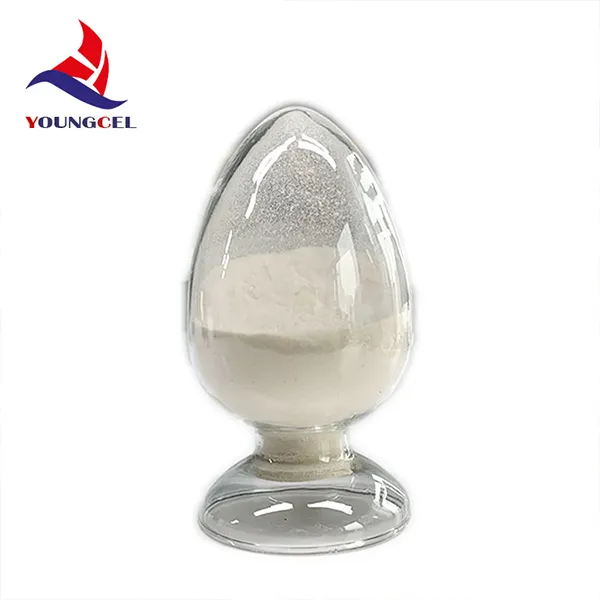An Overview of Cellulose Ether in China Applications, Market Trends, and Future Prospects
Cellulose ether is a significant industrial product derived from natural cellulose, obtained primarily from wood pulp and cotton. It is extensively used in a variety of applications ranging from construction and pharmaceuticals to food and personal care products. In China, the cellulose ether industry has witnessed substantial growth over the past few decades, becoming one of the leading producers and consumers of this vital material.
Understanding Cellulose Ether
Cellulose ether is characterized by its versatility and unique properties. It is a water-soluble polymer that can form gels and films, making it valuable in many industrial applications. The most common types of cellulose ethers include hydroxypropyl methylcellulose (HPMC), methylcellulose (MC), carboxymethyl cellulose (CMC), and ethyl cellulose (EC). Due to their thickening, gelling, and emulsifying properties, these materials are integral to various formulations, enhancing texture, stability, and usability.
Market Dynamics in China
China has emerged as a global powerhouse in the cellulose ether market. The country’s robust construction and pharmaceutical industries are key drivers of demand for cellulose ethers. In construction, HPMC and MC are widely used in dry-mix mortars, tile adhesives, and plaster, providing improved workability and adhesion. The rapid urbanization and infrastructure development in China have further fueled the growth of these applications.
In the pharmaceutical sector, cellulose ethers serve as excipients, aiding in drug formulation by improving solubility and stability. The increasing healthcare awareness and expansion of the pharmaceutical market in China have contributed to the growing demand for cellulose ether.
The food industry is another significant market for cellulose ethers. CMC, for instance, is commonly used as a thickening agent and stabilizer in food products such as ice cream, sauces, and baked goods. The growing consumer preference for processed food and convenience products has further propelled the demand for cellulose ethers in this sector.
china cellulose ether

Technological Advancements and Innovations
Innovation plays a crucial role in the cellulose ether market. Chinese manufacturers are increasingly investing in research and development to enhance product quality and expand applications. Advanced manufacturing techniques are being utilized to produce cellulose ethers with specific functionalities to cater to diverse industry needs.
Moreover, the rise of eco-friendly products is prompting producers to focus on sustainable sourcing and environmentally friendly production processes. This trend is gaining traction as consumers become more aware of sustainability issues, leading to additional opportunities for growth in the cellulose ether market.
Challenges and Future Prospects
Despite the growth potential, the cellulose ether industry in China faces several challenges. Fluctuations in raw material prices, particularly cellulose, can impact production costs and pricing strategies. Additionally, competition from alternative thickening agents and synthetic polymers poses a threat to market share.
However, the future outlook for cellulose ethers in China remains promising. With ongoing urbanization, growth in the pharmaceutical and food sectors, and an increasing focus on sustainability, the demand for cellulose ethers is expected to rise. The government's emphasis on green technology and environmental regulations will also drive innovation and the adoption of sustainable practices within the industry.
Conclusion
In conclusion, the cellulose ether market in China is poised for substantial growth, driven by diverse applications in construction, pharmaceuticals, and food. As the industry adapts to emerging trends and challenges, investments in innovation and sustainability will play a vital role in shaping its future. With its increasing global prominence, China's cellulose ether industry exemplifies the potential of natural polymers in meeting modern industrial demands while promoting environmental responsibility.
-
Rdp Powder: Key Considerations for Wholesalers in the Building Materials IndustryNewsJul.08,2025
-
Key Considerations for Wholesalers: Navigating the World of Hpmc - Based ProductsNewsJul.08,2025
-
Hpmc Detergent: Key Considerations for WholesalersNewsJul.08,2025
-
Key Considerations for Wholesalers: China Hpmc For Tile Adhesive, Coating Additives, Concrete Additives, and MoreNewsJul.08,2025
-
Crucial Considerations for Wholesalers: Navigating the World of Construction MaterialsNewsJul.08,2025
-
Key Considerations for Wholesalers Sourcing Additive For Cement, Additive For Concrete, Additive For Putty from Additive Manufacturer Shijiazhuang Gaocheng District Yongfeng Cellulose Co., Ltd.NewsJul.08,2025




